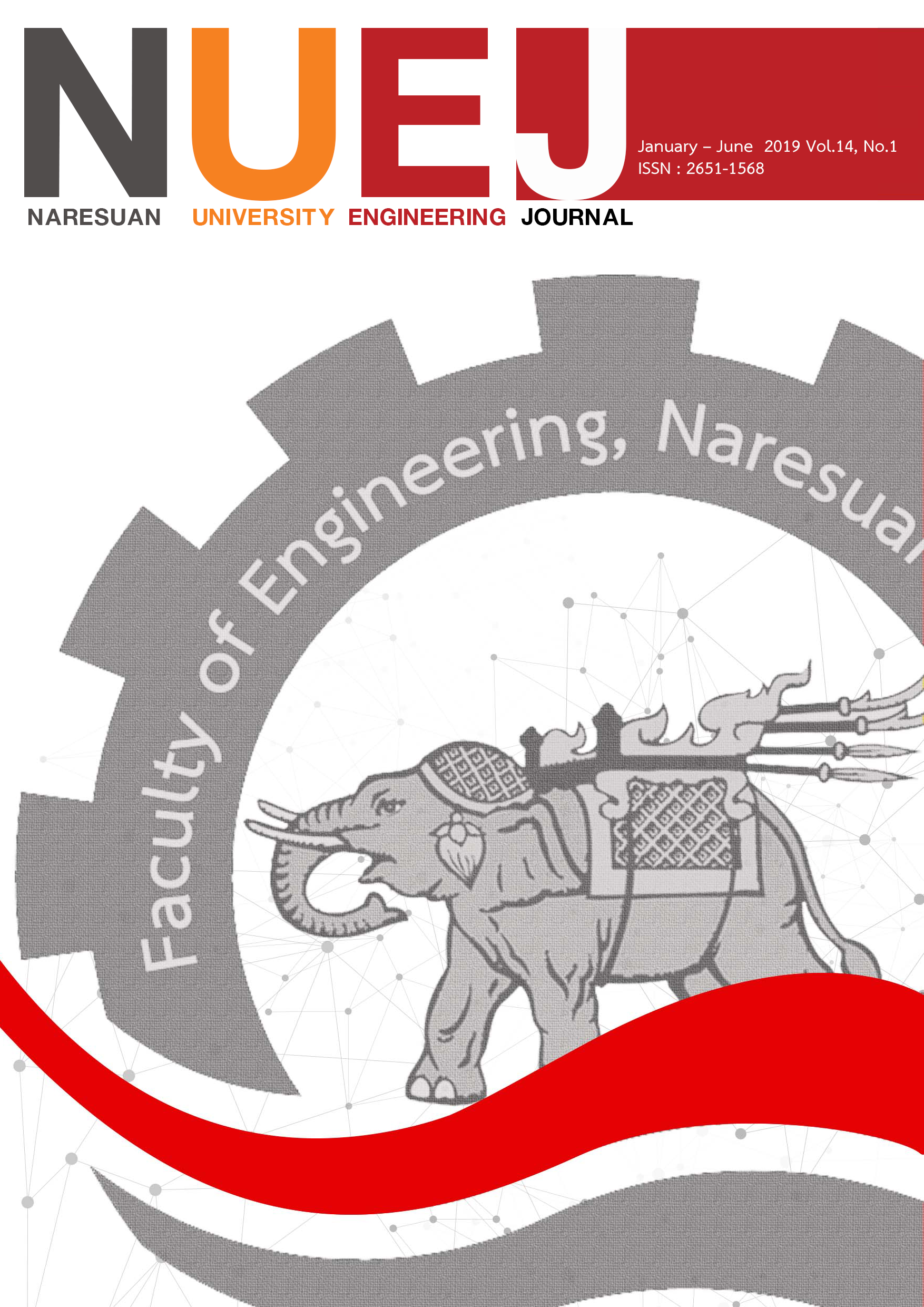ผลของการใช้เถ้าก้นเตาในการลดการหดตัวของคอนกรีต
Main Article Content
บทคัดย่อ
งานวิจัยนี้ศึกษาผลของการใช้เถ้าก้นเตาจาก 2 แหล่งในประเทศไทยที่ไม่ผ่านการบดในการเป็นวัสดุบ่มภายในทีมีต่อพฤติกรรมการหดตัวแบบออโตจีนัสและการหดตัวแบบโดยรวมของคอนกรีต งานวิจัยนี้ใช้เถ้าก้นเตา 3 ชนิด ที่มีความสามารถในการกักเก็บน้ำแตกต่างกัน ประกอบด้วยBAH BAB และ BAMM โดยมีร้อยละการกักเก็บน้ำเท่ากับ 18.8 21.1 และ 29.6 ตามลำดับ เถ้าก้นเตาถูกใช้แทนที่มวลรวมละเอียดในปริมาณร้อยละ 10 และ 30 โดยปริมาตรของมวลรวมละเอียด อัตราส่วนน้ำต่อวัสดุประสานสำหรับส่วนผสมคอนกรีตมีค่าเท่ากับ 0.35 และ 0.55 จากผลการศึกษาพบว่าการใช้เถ้าก้นเตาที่ไม่ผ่านการบดในส่วนผสมคอนกรีตเพื่อทำหน้าที่เป็นวัสดุบ่มภายในสามารถช่วยลดค่าการหดตัวทั้งแบบออโตจีนัสและแบบโดยรวมค่าการหดตัวมีค่าลดลงตามปริมาณการแทนที่ของเถ้าก้นเตาที่เพิ่มขึ้น คอนกรีตผสมเถ้าก้นเตาที่มีค่าการกักเก็บน้ำสูงจะมีการหดตัวต่ำกว่าคอนกรีตผสมเถ้าก้นเตาที่มีค่าการกักเก็บน้ำต่ำ
Article Details
References
[2] Bai Y.,Darcy F. and Basheer P. A. M.(2005). Strength and drying shrinkage properties of concrete containing furnace bottom ash as fine aggregate. Construction and Building Materials, 19, 691-697.
[3] Durán-Herrera A., Claude-Aïtcin P., and Petrov N.(2007). Effect of Saturated Lightweight Sand Substitution on Shrinkage in 0.35 w/bConcrete. ACI Material Journal, No.104, M06.
[4] Cusson D. and Hoogeveen T.(2008). Internal curing of high-performance concrete with pre soaked fine lightweight aggregate for prevention of autogenous shrinkage cracking. Cement and Concrete Research, 38, 757-765.
[5] Shi-Cong K. and Chi-Sun P.(2009). Properties of concrete prepared with crushed fine stone, furnace bottom ash and fine recycled aggregate as fine aggregates. Construction and Building Materials, 2, 2877-2886.
[6] Andrade L. B., Rocha J. C. and Cheriaf M.(2009). Influence of coal bottom ash as fine aggregate on fresh properties of concrete. Construction and Building Materials, 23, 609-614.
[7] Zhutovsky S., Kovler K. and Bentur A.(2011). Revisiting the protected paste volume concept for internal curing of high-strength concretes, Cement and Concrete Research, 41, 981-986.

